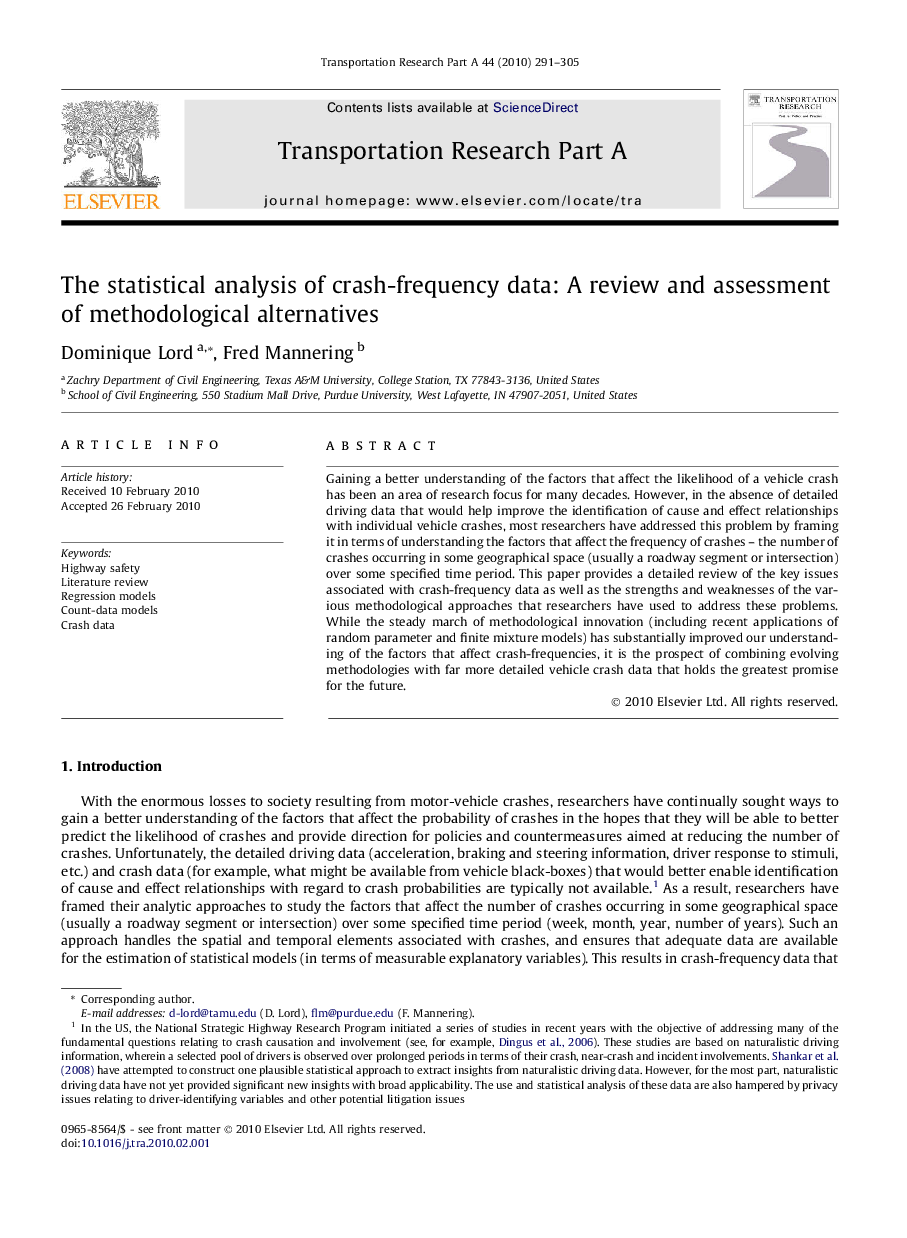| کد مقاله | کد نشریه | سال انتشار | مقاله انگلیسی | نسخه تمام متن |
|---|---|---|---|---|
| 310510 | 533163 | 2010 | 15 صفحه PDF | دانلود رایگان |

Gaining a better understanding of the factors that affect the likelihood of a vehicle crash has been an area of research focus for many decades. However, in the absence of detailed driving data that would help improve the identification of cause and effect relationships with individual vehicle crashes, most researchers have addressed this problem by framing it in terms of understanding the factors that affect the frequency of crashes – the number of crashes occurring in some geographical space (usually a roadway segment or intersection) over some specified time period. This paper provides a detailed review of the key issues associated with crash-frequency data as well as the strengths and weaknesses of the various methodological approaches that researchers have used to address these problems. While the steady march of methodological innovation (including recent applications of random parameter and finite mixture models) has substantially improved our understanding of the factors that affect crash-frequencies, it is the prospect of combining evolving methodologies with far more detailed vehicle crash data that holds the greatest promise for the future.
Journal: Transportation Research Part A: Policy and Practice - Volume 44, Issue 5, June 2010, Pages 291–305